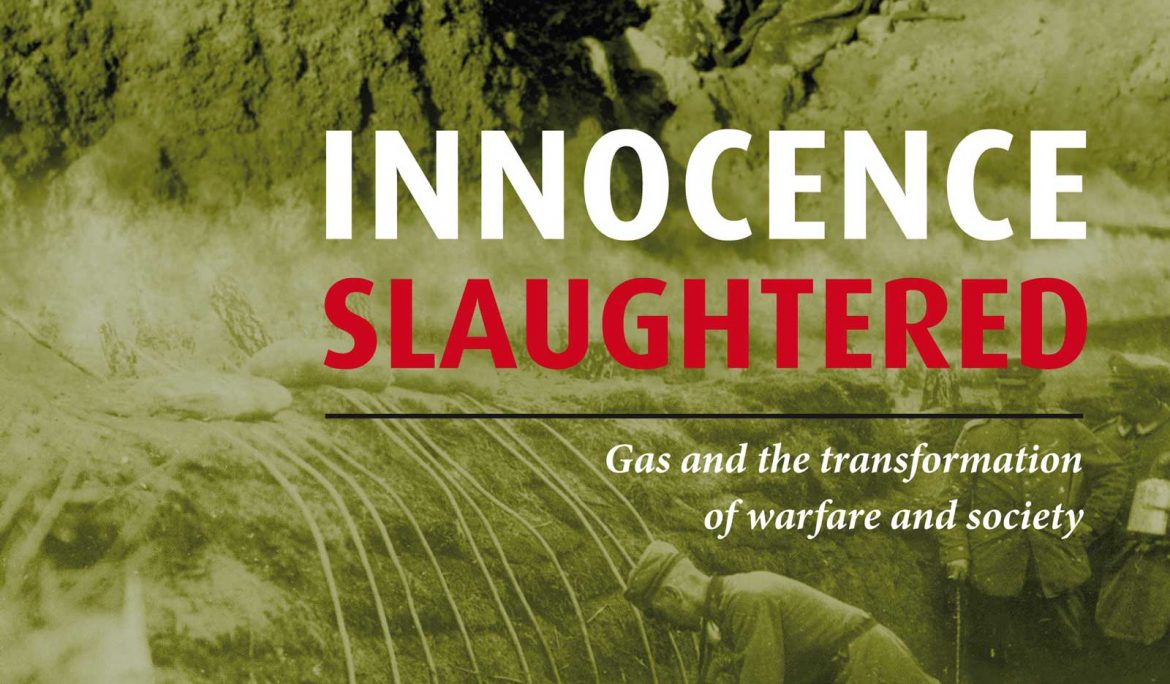Innocence Slaughtered: Introduction
Innocence Slaughtered will be published in December 2015 In November 2005 In Flanders Fields Museum organised and hosted an international conference in Ypres, entitled 1915: Innocence Slaughtered. The first major attack with chemical weapons, launched by Imperial German forces from their positions near Langemarck on the northern flank of the Ypres Salient on 22 April 1915, featured prominently among the presentations. I was also one of the speakers, but my address focussed on how to prevent a similar event with biological weapons. Indeed, it was one of the strengths of the conference not to remain stuck in a past of—at …
Nuclear outrage
In its situation report of 11 March 2015, the World Health Organization (WHO) tallies a death toll of 9,961 out of 24,247 cases (41% mortality rate) in the three West-African countries of Guinea, Liberia and Sierra Leone. While the overall rate of new infections seems to be slowing down, the numbers nevertheless continue to rise. Infectious disease is the greatest threat to mankind, far higher than any imaginable terrorist plot. According to WHO statistics from about 10 years ago, infectious diseases are responsible for over 13 million deaths worldwide each year. That is 25% of all deaths worldwide each year. …
Roundtable invitation: Syria’s Chemical Demilitarization
INVITATION Syria’s Chemical Demilitarization: Progress, Challenges, and Lessons A Roundtable Discussion with Dr. Paul F. Walker, Amb. Serguei Batsanov, Dr. Ralf Trapp, & Dr. Jean Pascal Zanders Introductory Remarks by Dr. Alexander Likhotal Organized by Green Cross International, Pugwash Conferences on Science and World Affairs, and the Chemical Weapons Convention Coalition Monday, May 19, 2014, 17:00-19:00 WMO Building, 7 bis avenue de la Paix, 2d floor Vieira de Mello auditorium Syria’s accession to the Chemical Weapons Convention (CWC) in September 2013 made it the 190th State Party to the Convention with only six countries now remaining outside the treaty regime. …
Must the Belgian babies be bayoneted all over again?
August, 100 years ago: the Hun from the east invaded little, neutral Belgium. In the opening weeks of the campaign the Hun was not a good boy. He wilfully executed civilians, raped women, destroyed historical monuments and burned down university libraries—all war crimes that have been extensively documented. The worst barbarian acts, however, he committed against babies. He cut off their hands, so that the grownup man could never take up arms against the Hunnic master. Worse, he tossed them in the air and caught them on his bayonet. Alas, each investigated claim proved to be a myth. Meanwhile, many …
The Nuclear Nonproliferation Regime at a Crossroads
Memorandum No. 137, Tel Aviv: Institute for National Security Studies, May 2014 Editors: Emily B. Landau , Azriel Bermant The articles compiled in this volume grapple with questions and dilemmas that arise from a growing sense in recent years that the Nuclear Non-Proliferation Treaty (NPT) has reached a critical juncture, and that its continued role as the centerpiece of the nuclear nonproliferation regime is at risk. This is the result of a process that has unfolded gradually since the end of the Cold War, which also spelled the end of the bipolar global structure that, in the minds of many, …
Until silence
Children and babies—whether born or unborn—suffer immensely in any armed conflict. Mental trauma from witnessing human wasting, which no person should really be exposed to anymore. Physical injuries that scar the young ones for the rest of their lives, even if a sense of normalcy could ever be recaptured. And death, often considered the worst possible outcome, but nonetheless a fortuitous escape from a lifelong suffering inflicted by a senseless war ripping apart the early stages of their far too many young lives. For the survivors—bereft parents and mothers of the stillborn one—deep-reaching psychological wounds far beyond consolation. Until the …
Syria: Disarmament in animated suspense
Syria has now missed about every single deadline since it was unable to move the Priority 1 chemicals out of the country by the end of last year. These even include renegotiated time frames and the self-imposed final date of 27 April. One more fixed date is pending: 30 June, by which time all precursor chemicals should have been neutralised. It would now seem that the world will sigh with relief if everything is aboard the Danish and Norwegian freighters by the end of next month. US officials envisage 60 working days to neutralise the volume of precursor chemicals and …
NPT Article VI and BTWC Article IX
[This contribution appeared orginally in Arms Control Law, and was in reply to a discussion on the blog. Links to the original arguments are included. – Jean Pascal] This discussion between Marco [Roscini] and Dan [Joyner] on Article VI of the NPT and customary law is instructive. In this particular case, Marco’s application of the notion to a single article rather than the totality of the treaty puzzles me. I would tend to agree with Dan’s counterpoint. However, Dan then refers to the CWC in its entirety to draw an analogy. In my mind a bit problematic for two reasons: …
On the alleged customary nature of Article VI of the NPT – A Rejoinder to Joyner and Zanders
By Marco Roscini, 5 June 2014 [Marco Roscini, Reader in International Law at the University of Westminster, wrote this rejoinder on Arms Control Law. It is reproduced here with permission, as it forms part of a broader discussion about useful insights for nuclear disarmament to be derived from chemical and biological weapon disarmament. – Jean Pascal] Both Dan and Jean-Pascal offer excellent counterarguments in their replies to my blog post on the customary nature of Article VI, and I thank them for this. After thinking carefully about their comments, I would like to offer some further thoughts. 1) I think that …

